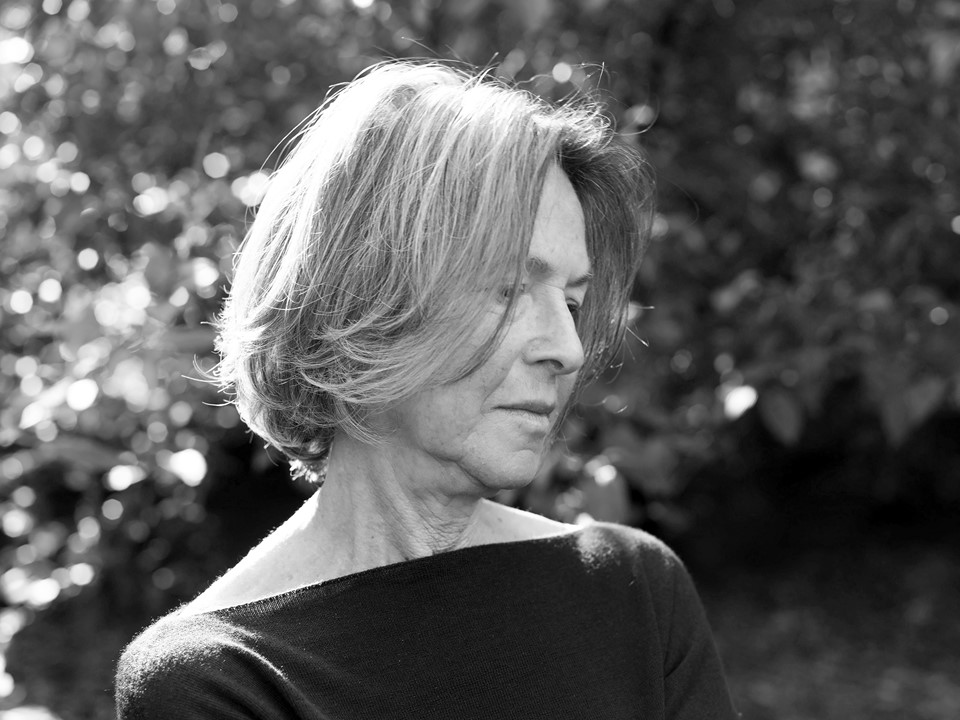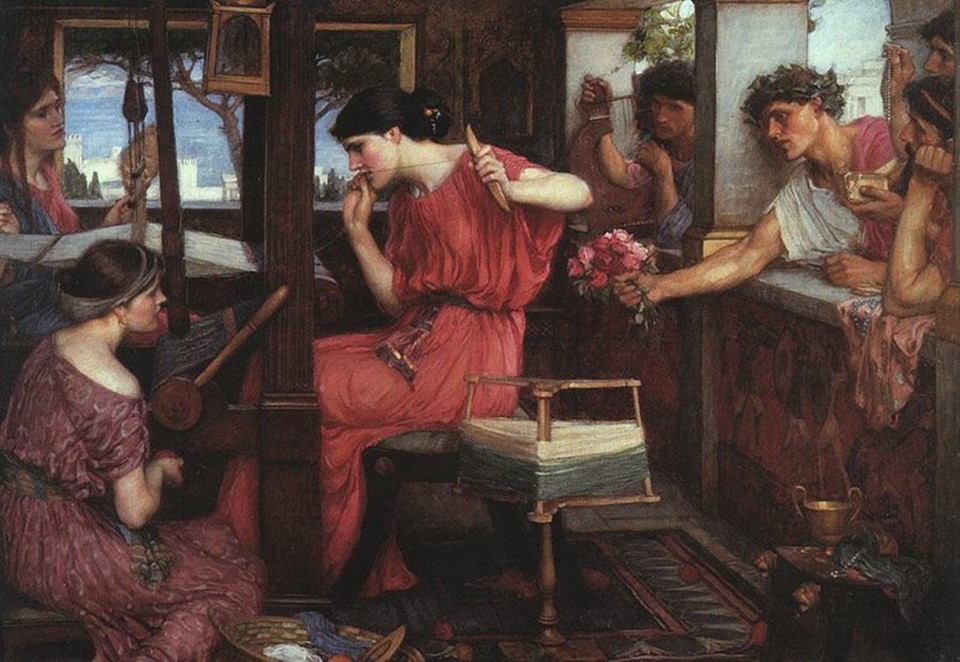
Penelope and the Suitors, 1912, oil on canvas, 129.8 x 188 cm, Aberdeen Art Gallery
This year’s Nobel Prize for Literature has been awarded to the US poet Louise Glück… “for her unmistakable poetic voice that with austere beauty makes individual existence universal.“ Louise Glück and William Waterhouse created Penelope’s Song and Penelope and the Suitors respectively. Could the thread between Penelope’s teeth be the “detail” that connects them? Little soul, little perpetually undressed one… https://emuseum.aberdeencity.gov.uk/objects/2543/penelope-and-the-suitors?ctx=834e759eb70bc93f740b9ba0ca929699d45a9ea3&idx=0 and https://achievement.org/achiever/louise-gluck/ and https://achievement.org/achiever/louise-gluck/#interview
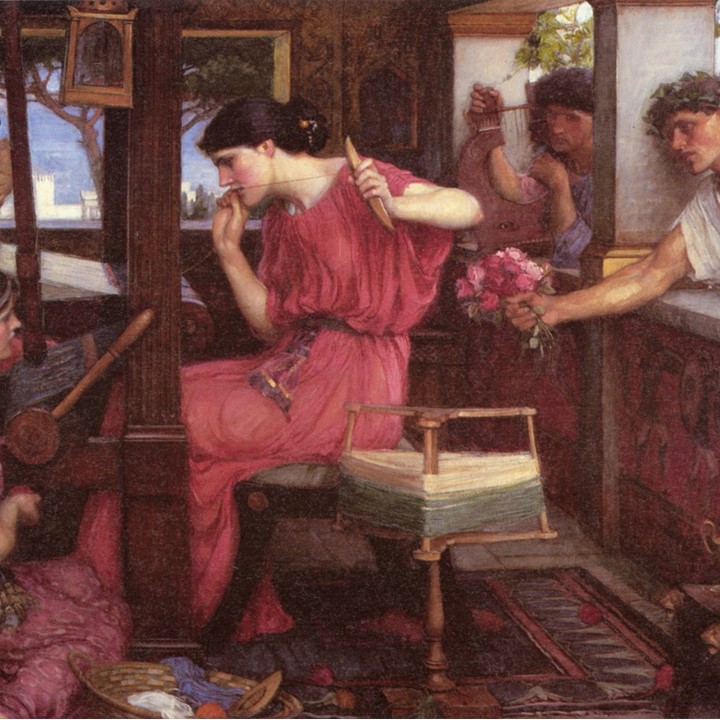
Brian Henry is so right when he writes… “Since Homer introduced that wily traveller Odysseus to the world, countless poets have attempted to resurrect the tale and make it their own. Odysseus’ ten-year voyage home has become an undeniable part of our collective unconscious.” The Odyssey is the greatest narration of the western civilization, and according to BBC, Homer’s famous epic is No. 1 of its Culture’s list with the 100 “fictional stories that shaped the world”. How successful is it for a contemporary poet to compare with the Odyssey? Once more, I will quote Brian Henry, who believes that Louise Glück’s “weaving” in Meadowlands “is a dualistic narrative that juxtaposes an ordinary contemporary marriage against Odysseus’ famous one.”
Reading through Louise Glück’s Meadowlands, it is apparent that the poet “is less interested in the man (Odysseus) and more intrigued by the people around him – Penelope, Telemachus, Circe…” and, “…as suitors swarm the house, cleaning out the cupboards and basically wrecking the place, Penelope stoically weaves…” I particularly like Penelope’s Song, the book’s opening poem, as “it captures perfectly her (Penelope) vacillating personality. …The poem is worth quoting in full because it evinces both Glück’s mastery of this psychological complexity and her always-engaging language.” Brian Henry’s 1998 article The Odyssey Revisited in the National Journal of Literature and Discussion: https://www.vqronline.org/odyssey-revisited and https://yougoculture.com/news/first-place-odyssey-bbcs-list
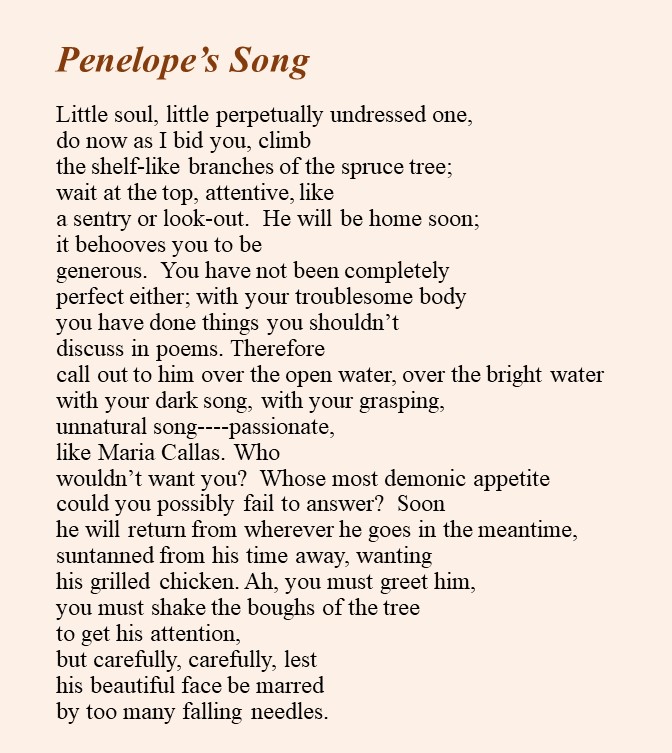
Painted by William Waterhouse in1912, Penelope and the Suitors stirred much debate and discourse. Inspired by Homer’s famous story of fidelity and marital devotion, Waterhouse presents a crucial event in Penelope’s life… “For many years, her husband Odysseus had been absent at the siege of Troy. Pressed to make a second marriage, she stalls for time, telling the crowds of suitors that they must wait until she has finished weaving a shroud for her father-in-law. During the day she works at her weaving and at night, still convinced that Odysseus will return, she undoes all her day’s work.”
William Waterhouse was an enthusiastic follower of the Pre-Raphaelite movement and the work of Rossetti in particular. Penelope is the central figure of the composition, dark-haired, dressed in dusk red, turns her back to the persistent suitors who woo her with all their persuasive might. My favourite “touch” is the thread between her teeth… it somehow unnerves me…
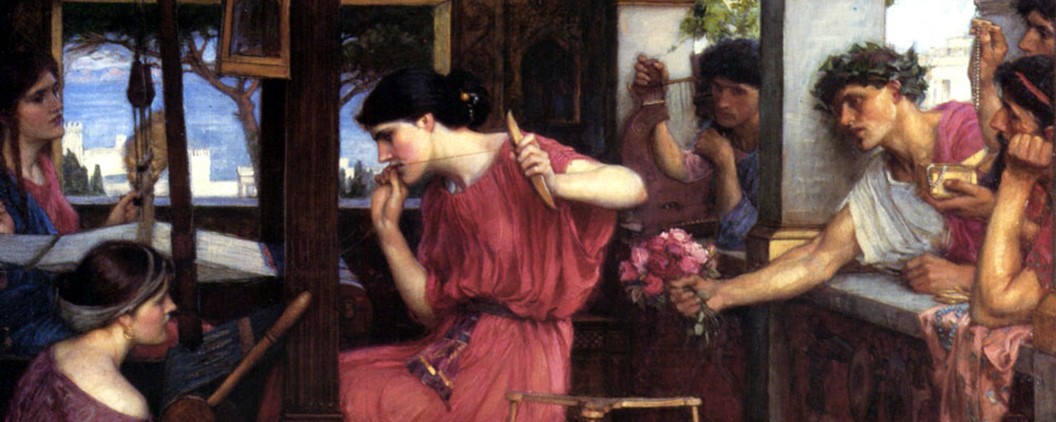
“Penelope and the Suitors, completed in 1912, was the last of John William Waterhouse’s paintings on a mythological theme exhibited at the Royal Academy. Commissioned by Aberdeen Art Gallery, it was first displayed at its exhibition on New Year’s Eve 1911 before being returned to the artist for amendment and completion and then shown at the Royal Academy in the summer of 1912. The following year it was exhibited at the Royal Glasgow Institute of Fine Arts.” https://engole.info/penelope-and-the-suitors/ and https://emuseum.aberdeencity.gov.uk/objects/2543/penelope-and-the-suitors?ctx=834e759eb70bc93f740b9ba0ca929699d45a9ea3&idx=0
For all of my POSTS, I try to introduce a PowerPoint or a Student Activity to facilitate my teacher/readers. For Student Activity on… Louise Glück and William Waterhouse, please… Click HERE!
